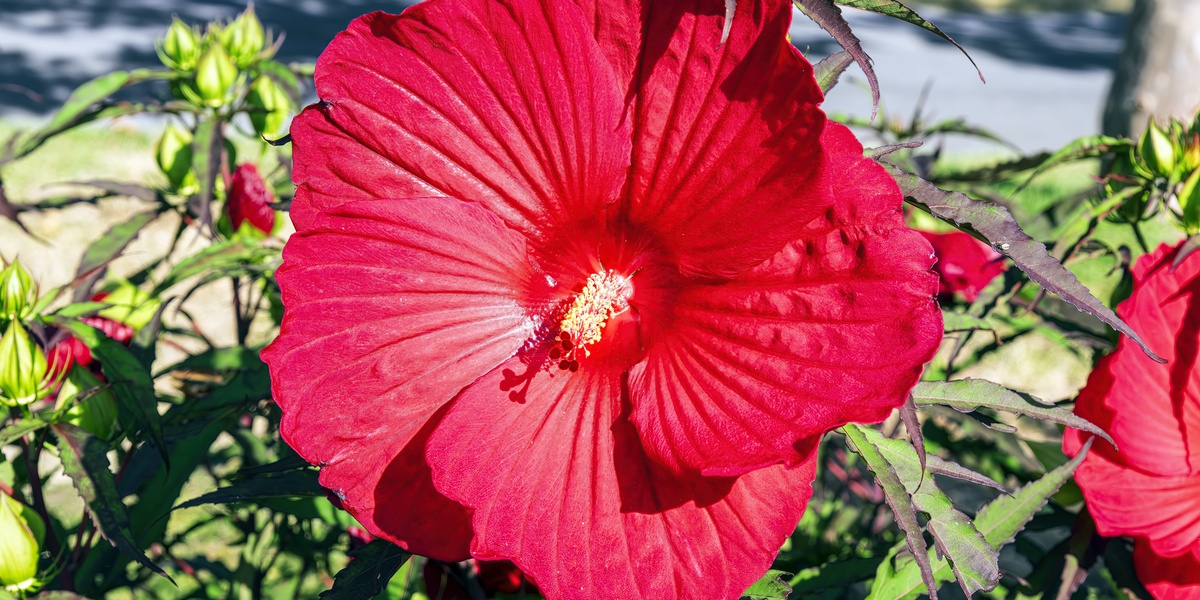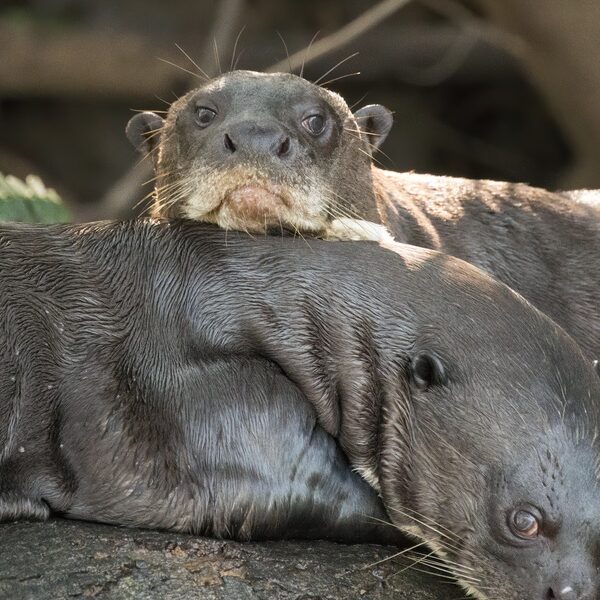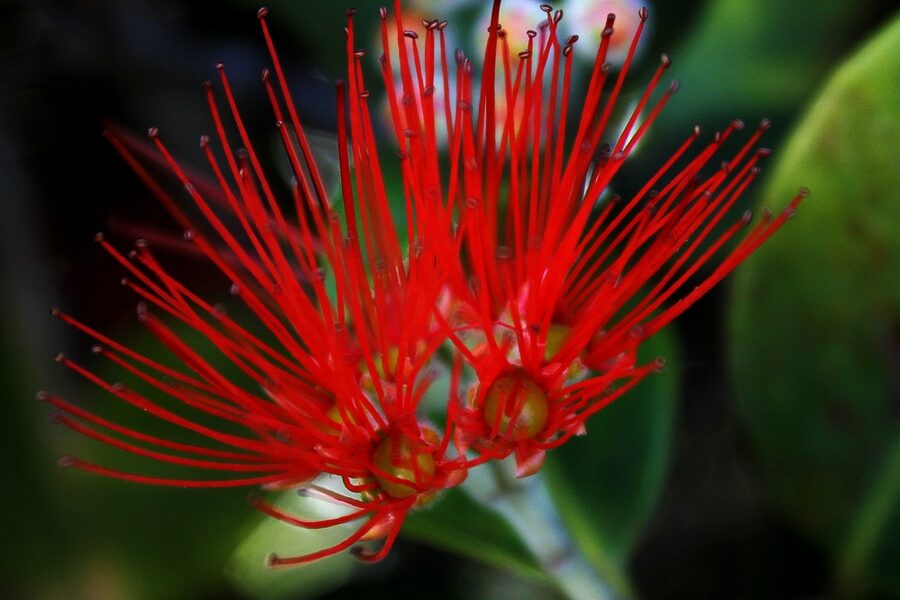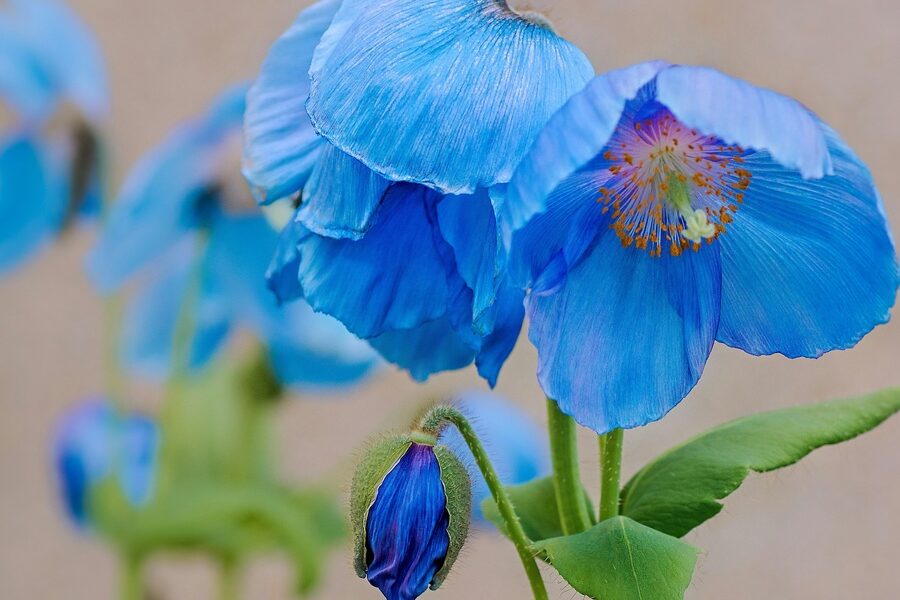East Timor’s islands and uplands host a mix of coastal scrub, lowland forest and montane pockets where wildflowers appear along roadsides, riverbanks and village gardens. Local plants are part of everyday life, used in small ceremonies and admired by visitors on short hikes.
There are 24 Flowers of East Timor, ranging from Allamanda to White gum. For each entry you’ll see Scientific name,Habitat – Where found (max 15 words),Bloom season (months) (max 15 words); you’ll find below.
When is the best time to see most wildflowers in East Timor?
The main flowering pulse follows the wet season, roughly November to April, when many lowland and roadside species bloom; some montane plants peak slightly later. Plan visits after rains, check local weather, and visit varied elevations for the widest range.
How can I learn which species are native or protected?
Use the scientific name in field guides or online databases (local herbaria, IUCN, national environment sites) to confirm status, and respect rules about collecting or disturbing plants—protected or rare species are often listed by local authorities.
Flowers of East Timor
| Common name | Scientific name | Habitat – Where found (max 15 words) | Bloom season (months) (max 15 words) |
|---|---|---|---|
| Frangipani | Plumeria rubra | Gardens, cemeteries, villages across islands | Year-round |
| Bougainvillea | Bougainvillea glabra | Urban gardens, fences, roadside across islands | Year-round |
| Chinese hibiscus | Hibiscus rosa-sinensis | Gardens, hedgerows, village plantings | Year-round |
| Sea hibiscus | Hibiscus tiliaceus | Coastal fringes, river mouths and mangrove edges | Year-round |
| Flamboyant | Delonix regia | Roadside shade trees, lowland gardens | Nov–Mar |
| Golden shower | Cassia fistula | Temples, roadside plantings and gardens | Jan–Apr |
| Tropical almond | Terminalia catappa | Beaches, riversides and coastal villages | Year-round |
| White gum | Eucalyptus alba | Open woodlands, degraded hills and planted sites | May–Oct |
| Red mangrove | Rhizophora apiculata | Intertidal mangrove forests and sheltered estuaries | Year-round |
| Sea poison tree | Barringtonia asiatica | Sandy beaches and coastal fringe, scattered islets | Dec–Mar |
| Ixora | Ixora coccinea | Home gardens, temples, roadside hedges | Year-round |
| Allamanda | Allamanda cathartica | Garden walls, hedges and sunny yards | Year-round |
| Gardenia | Gardenia jasminoides | Courtyards, sheltered gardens near towns and hotels | May–Oct |
| Desert rose | Adenium obesum | Village yards, rocky slopes and pots | Apr–Sep |
| Coral tree | Erythrina variegata | Roadsides, secondary woodland and coastal villages | May–Aug |
| Mango flower | Mangifera indica | Home gardens, orchards and lowland fields | Sep–Jan |
| Jasmine | Jasminum sambac | Home gardens, ceremonial plantings and courtyards | Year-round |
| Sandalwood | Santalum album | Dry forests, degraded hills and harvested sites | Mar–Aug |
| Grey mangrove | Avicennia marina | Upper mangrove zones on sheltered coasts | Year-round |
| Tamarind | Tamarindus indica | Home gardens, roadside and agroforestry plots | Oct–Mar |
| Coconut | Cocos nucifera | Beaches, village yards and coastal plantations | Year-round |
| Crown-of-thorns | Euphorbia milii | Boundary hedges, dry gardens and courtyards | Year-round |
| Papaya | Carica papaya | Home gardens, small farms and disturbed ground | Year-round |
| Queen’s crape-myrtle | Lagerstroemia speciosa | Parks, roadside plantings and lowland gardens | May–Sep |
Images and Descriptions
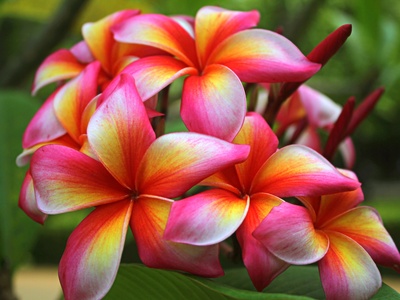
Frangipani
Fragrant, waxy-petalled small tree with clusters of white, pink or red flowers. Widely planted around homes and temples in Timor-Leste for decoration and ceremonies; blooms most of the year and is not of conservation concern due to heavy cultivation.

Bougainvillea
Hardy climbing shrub known for papery magenta, purple or white bracts surrounding tiny flowers. Thrives in sunny, dry sites and is used as living fencing and ornament in towns and coastal villages throughout Timor-Leste; flowers repeatedly year-round.

Chinese hibiscus
Showy single or double large flowers in many colors grown as ornamentals. Common around homes and public spaces in Timor-Leste; blooms year-round with peaks in warm months and is used for hair decoration and garden display.
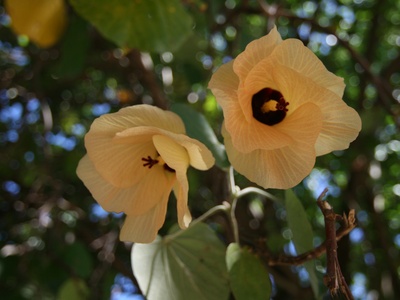
Sea hibiscus
Resilient coastal tree with yellow flowers that age orange and heart-shaped leaves. Common along Timor-Leste shores, used for shade, fuel and craft wood; helps stabilise coastlines and supports shoreline biodiversity.

Flamboyant
Large umbrella-shaped tree with spectacular orange‑red flower clusters in the wet season. Widely planted for shade and ornament in towns and villages; attracts birds and insects and is a familiar seasonal landmark across lowland Timor-Leste.

Golden shower
Deciduous tree with long hanging clusters of bright yellow flowers. Planted as an ornamental and for cultural display; shows a strong seasonal flush of blooms at the start of the wet season and is valued for its dramatic display.
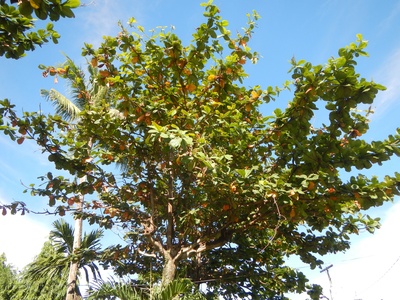
Tropical almond
Large coastal tree with horizontal branches and edible nuts; flowers are small and inconspicuous. A common beach and riverside shade tree in Timor-Leste, valued for shade, nuts and as a coastal landmark where leaves turn red before dropping.

White gum
Medium tree with pale, smooth bark and clusters of cream flowers in the dry season. Present naturally or planted in Timor-Leste for timber and fuel; flowers attract insects and the species is used in reforestation and agroforestry.
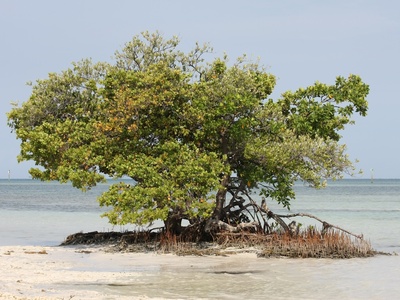
Red mangrove
Stilt-rooted mangrove forming dense coastal forests with small flowers and wind‑assisted pollination. Widespread in Timor-Leste’s mangrove belts; crucial for shoreline protection, nursery habitat for fish, and of conservation concern where mangroves are cleared.
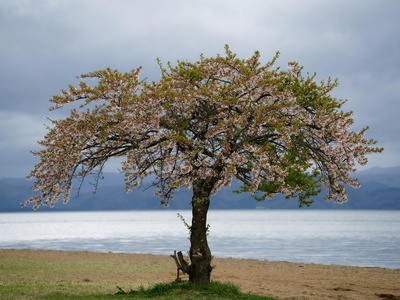
Sea poison tree
Large coastal tree with dramatic white, bottlebrush-like nocturnal flowers that attract bats and moths. Fruits are buoyant and poisonous; commonly seen on beaches of Timor-Leste and often used as decorative shoreline trees despite toxic seeds.

Ixora
Dense shrub producing tight clusters of small tubular flowers in red, orange or pink. Popular ornamental around homes and places of worship in Timor-Leste; attracts butterflies and is commonly used in simple garlands and garden borders.

Allamanda
Vigorous vine or shrub with large yellow funnel-shaped flowers used for bright display. Planted widely in Timor-Leste for fences and ornament; prefers sunny spots and is noted for toxic sap so handled with care.
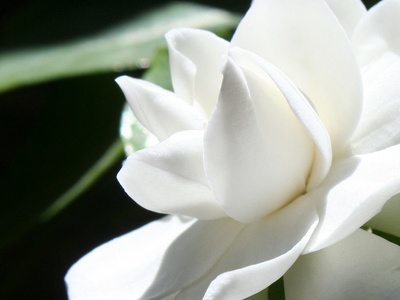
Gardenia
Shrub with glossy leaves and intensely fragrant white blossoms prized for perfume and decoration. Grows in sheltered, moist gardens in Timor-Leste, flowering mainly in warmer months; scent widely used in ceremonies and for personal adornment.

Desert rose
Succulent-stemmed shrub with trumpet-shaped pink, red or white flowers popular in pots and bonsai. Tolerates dry, rocky soils common in Timor-Leste’s dry zones; blooms in the dry to early wet season and is prized as an ornamental.
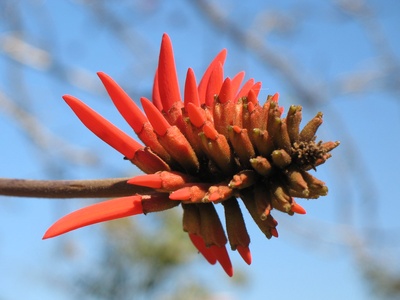
Coral tree
Spiny tree with dramatic, pea-family bright red flowers that attract birds. Commonly planted for shade, living fences and ornament across Timor-Leste; seasonal blooms create striking displays and the wood has traditional uses.
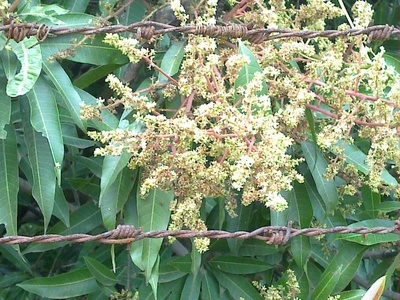
Mango flower
Trees produce large panicles of small fragrant flowers before fruiting season. Widely cultivated across Timor-Leste for fruit; flowering signals the start of mango production and supports bees and other pollinators essential for yields.
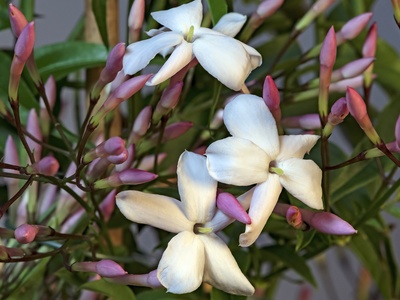
Jasmine
Climbing shrub with intensely fragrant small white flowers used in leis, offerings and perfume. Commonly grown around houses in Timor-Leste; blooms repeatedly in warm months and plays a role in cultural ceremonies and personal adornment.

Sandalwood
Small hemi‑parasitic tree with inconspicuous flowers and highly fragrant heartwood prized for incense and carving. Historically important in Timor-Leste trade; populations have declined from overharvest and remaining trees are of conservation and cultural concern.

Grey mangrove
Salt-tolerant mangrove with pencil-like pneumatophores and small insect‑visited flowers. Forms the landward fringe of many mangrove stands in Timor-Leste and is important for coastal stability, fisheries and shoreline ecology.

Tamarind
Large evergreen tree with fragrant cream flowers followed by edible sour pods used in cooking. Widely cultivated in Timor-Leste for its fruit and shade; flowers appear before pod development and support local pollinators.
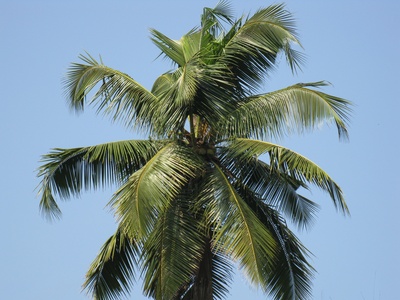
Coconut
Iconic palm whose inflorescences produce coconuts; flowers are modest but crucial for fruit production. Ubiquitous along Timor-Leste coasts, coconuts are central to diet, building materials and cultural life in coastal communities.

Crown-of-thorns
Spiny shrub with small central flowers surrounded by colorful bracts in red, pink or white. Widely used as a low-maintenance living fence in Timor-Leste; drought‑tolerant and valued for security, though its sap is skin-irritating.

Papaya
Fast-growing small tree with clusters of large fragrant flowers that develop into edible fruit. Commonly self-planted around homes in Timor-Leste, providing year-round fruit and quick shade; flowers attract pollinators and precede regular fruiting.
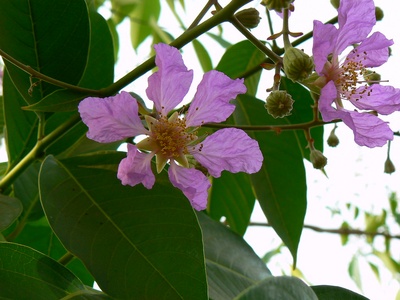
Queen’s crape-myrtle
Medium tree with long-lasting clusters of pink to purple crinkled flowers in the wet season and attractive peeling bark. Often planted for shade and ornament in Timor-Leste towns; admired for extended bloom and street-planting value.
